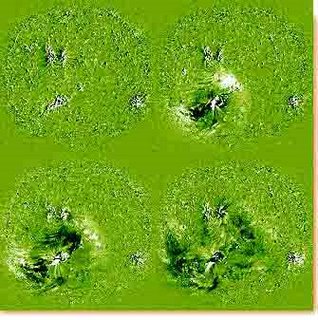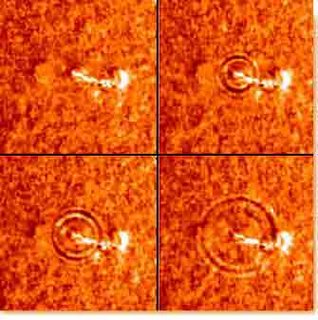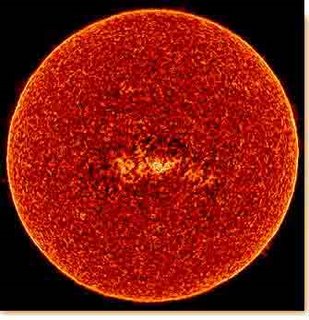Once we got some good data went into the lab and did the computer simulation. The simulation was excellent because I see how the data came to life. An interesting note in class was the fact that a Sun’s photon only travels one centimeter before it gets remittedd in a process called "random walk".
After this experiment I was interested in knowing more about the photosphere - I found some great photos that I think may give my students a better understand of this concept.
The photosphere is lowest layer of the atmosphere. This zone emits the light that we see. The photosphere is about 300 miles (500 kilometers) thick. But most of the light that we see comes from its lowest part, which is only about 100 miles (150 kilometers) thick. Astronomers often refer to this part as the sun's surface. At the bottom of the photosphere, the temperature is 6400 K, while it is 4400 K at the top.
The photosphere consists of numerous granules, which are the tops of granulation cells. A typical granule exists for 15 to 20 minutes. The average density of the photosphere is less than one-millionth of a gram per cubic centimeter. This may seem to be an extremely low density, but there are tens of trillions to hundreds of trillions of individual particles in each cubic centimeter.

A Moreton wave, a type of surface wave caused by a sudden release of energy by the sun, spreads across the solar surface in a series of four images. This wave front traveled at about 186 miles (300 kilometers) per second.

The surface of the sun is marked by many small patches of gas called granules, which are believed to be produced by the violent churning of gases in the sun's interior.

A rapidly expanding solar quake, which resembles an Earthquake, is shown in a series of images of the sun's surface. This quake spread out across the surface more than 62,150 miles (100,000 kilometers).
No comments:
Post a Comment